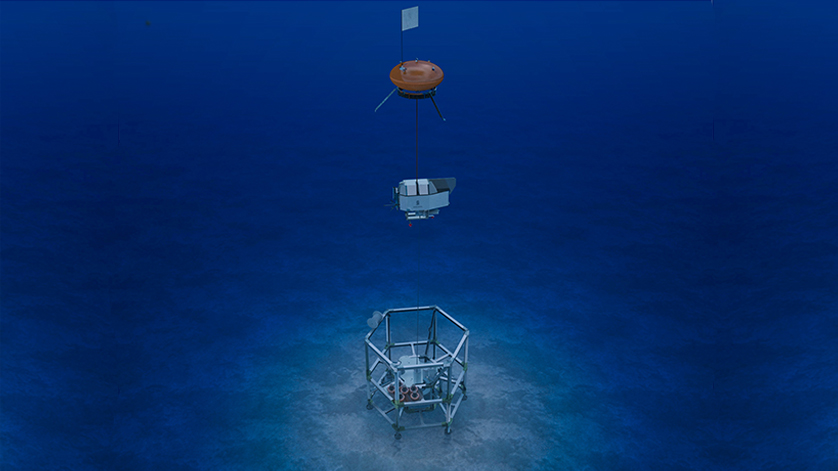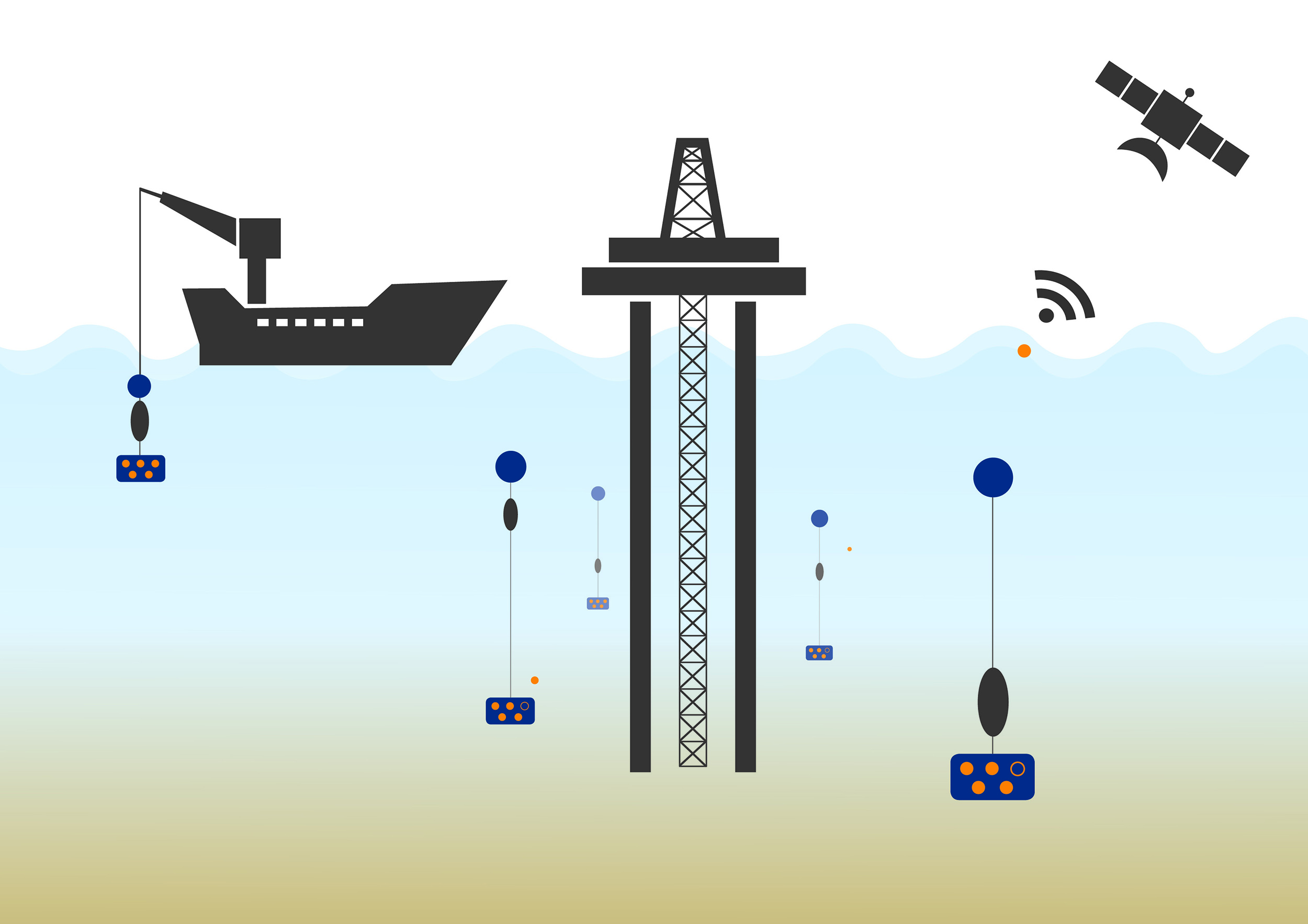Environmental Monitoring Offshore: Instantly Detect Leaks Underwater

Leaks on offshore platforms present a hazard to the marine environment and human health. The monitoring system FlexMoT will detect irregularities and provide a warning system for disasters. The system was presented at this year’s OCEANS’16 in Monterey.
Accidents in offshore oil & gas drilling are dangerous. The damage caused by the Deepwater Horizon oil spill in the Gulf of Mexico five years ago shows how high the costs can be for nature and those responsible. Now, a solution was presented at this year’s OCEANS Conference.
FlexMoT is an autonomous, flexible monitoring tool with two essential tasks: it works as a long-term monitoring system and it can be deployed at short notice in emergency situations. Furthermore, the set-up effort is minimal and data is quickly made available. Unlike classic measuring probes, FlexMoT allows for “live monitoring” for the first time. FlexMoT can be used as an early-warning system in the field of oil and gas production and for environmental monitoring in the field of offshore wind farms. The system is also suited for other measuring tasks under water, such as scientific long-term measurements, as well as for water monitoring. It was already successfully tested in the North Sea and the Skagerrak.
 Schematic diagram of the deployment and operation lifecycle of the FlexMoT platform around an offshore platform. (Rights of use: Fraunhofer IGD)
Schematic diagram of the deployment and operation lifecycle of the FlexMoT platform around an offshore platform. (Rights of use: Fraunhofer IGD)
To carry out its task, FlexMoT is anchored to the bottom of the sea. Its sensors record parameters such as salinity, pressure, and temperature. In addition, the concentration of gases (such as methane) in the water column are logged to detect leaks, for instance. “Depending on the setting, the sensor data is sent up to the water surface via a small messenger line once a day or for certain events, and conveyed to a relay station via GSM or satellite,” explains Fraunhofer researcher Thomas Ruth in his presentation at OCEANS’16. “The data is thus rapidly available and the system works independent of expensive surface connections for data transmission.” FlexMoT can thus work autonomously for up to one year.
The overall system is deliberately designed to be flexible. As a modular system, it can be set up for different missions and requirements. “Sensors of many different types can be used,” emphasizes Ruth. “Collected and delivered data as well as the state of the system are evaluated by a newly developed software and presented to the operator in graphical form.” The operator can then access a quick overview of the current situation or enter into a deeper analysis of the logged data for environmental monitoring or research.
The following companies were involved in the development of the FlexMoT project, which was funded by the German Federal Ministry for Economic Affairs and Energy: Kongsberg Maritime Contros GmbH (Kiel), Oktopus GmbH (Hohenwestedt), LEONI Elocab GmbH (Georgensgmünd), as well as Fraunhofer IGD (Rostock), and the GEOMAR Helmholtz Center for Ocean Research (Kiel).
Fraunhofer IGD is the world’s leading institute for applied research in Visual Computing. Visual Computing is image- and model-based information technology and includes computer graphics and computer vision, as well as virtual and augmented reality.
In simple terms, the Fraunhofer researchers in Darmstadt, Rostock, Graz, and Singapore are turning information into images and extracting information from images. In cooperation with its partners, technical solutions and market-relevant products are created.
Prototypes and integrated solutions are developed in accordance with customized requirements. In doing so, Fraunhofer IGD places users at the forefront, providing them with technical solutions to facilitate computer work and make it more efficient.
Owing to its numerous innovations, Fraunhofer IGD raises man-machine interaction to a new level. Man is able to work in a more result-oriented and effective way by means of the computer and visual-computing developments. Fraunhofer IGD has more than 200 employees and budget amounts about 20 million euros. Website on FlexMoT

